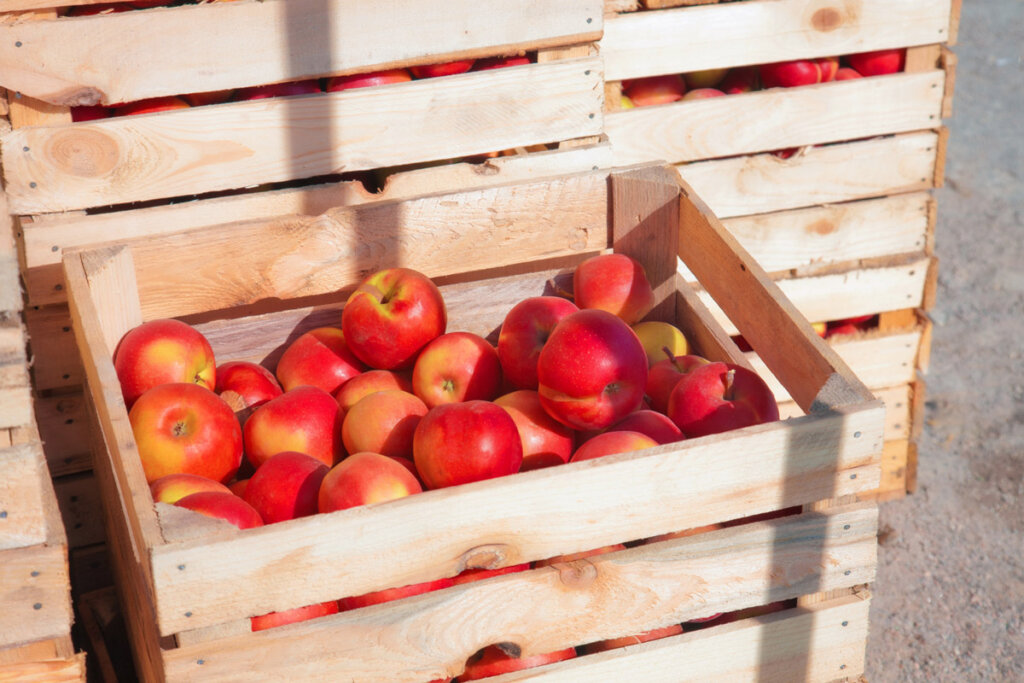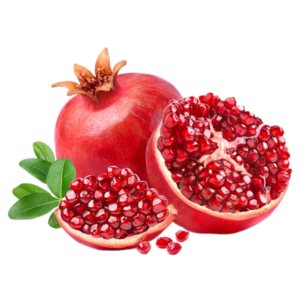Description
1. Botanical Information:
- Scientific Name: Malus domestica
- Family: Rosaceae
- Origin: Apples are believed to have originated in Central Asia (modern-day Kazakhstan). They have been cultivated for thousands of years and are now grown in temperate regions around the world.
2. Varieties of Apples:
There are over 7,500 varieties of apples, with different colors, flavors, and textures. Some of the most common varieties include:
- Red Delicious: Sweet and juicy, with a deep red skin.
- Granny Smith: Tart and crisp, bright green skin.
- Fuji: Sweet and crunchy, with a pinkish-red skin.
- Gala: Sweet, mild flavor with a yellowish-red skin.
- Honeycrisp: Known for its balance of sweetness and tartness, with a crunchy texture.
- Golden Delicious: Mildly sweet with a soft texture, yellow skin.
3. Nutritional Value:
Apples are a healthy choice for a snack and are packed with nutrients:
- Calories: About 52-57 calories per 100g (depends on the variety).
- Carbohydrates: Around 14g per 100g, primarily from natural sugars.
- Fiber: Apples are high in dietary fiber, especially in the skin, which aids digestion (about 2.4g per 100g).
- Vitamins:
- Vitamin C: Apples contain vitamin C, which supports the immune system.
- Vitamin A: Apples provide small amounts of vitamin A, contributing to eye health.
- Minerals: Includes small amounts of potassium, calcium, and magnesium.
- Antioxidants: Apples are rich in antioxidants, particularly flavonoids, which help protect the body from oxidative stress.
4. Health Benefits:
- Supports Heart Health: Apples contain soluble fiber (like pectin), which can help lower cholesterol levels and promote cardiovascular health.
- Aids Digestion: The fiber in apples helps regulate bowel movements and prevents constipation.
- Weight Management: Low in calories and high in fiber, apples can help with weight management by promoting satiety and reducing hunger.
- Blood Sugar Control: Apples have a low glycemic index and their fiber content helps manage blood sugar levels, making them a good option for people with diabetes.
- Immune Boosting: The vitamin C in apples helps strengthen the immune system.
5. Storage and Shelf Life:
- Fresh apples should be stored in a cool, dry place and can last for a few weeks at room temperature. For longer storage, refrigerating apples in the crisper drawer extends their shelf life to several weeks or even a couple of months, depending on the variety.
- Apples can also be stored in controlled atmosphere storage or processed into apple juice, applesauce, or dried apples to prolong their usability.
6. How to Enjoy Fresh Apples:
- Raw: Eaten as is, with the skin on or peeled if desired.
- Sliced: Great for snacks or salads.
- Juiced or Smoothies: Fresh apple juice or blended with other fruits and vegetables.
- Baked: Used in pies, crisps, and tarts, or roasted with cinnamon.
- As a topping: Added to oatmeal, yogurt, or desserts.
7. Culinary Uses:
Fresh apples are incredibly versatile in cooking and baking. They can be used to make pies, crumbles, sauces, and cider. Apples also pair well with other fruits, nuts, cheese, and meats like pork or poultry.
8. Cultural Significance:
- Apples are deeply embedded in various cultures and traditions, symbolizing knowledge, health, and temptation (e.g., the biblical story of Adam and Eve).
- In many countries, apples are part of harvest celebrations and are featured in traditional dishes.
Overall, fresh apples are a nutritious and delicious fruit with many health benefits, versatile culinary uses, and rich cultural significance.




